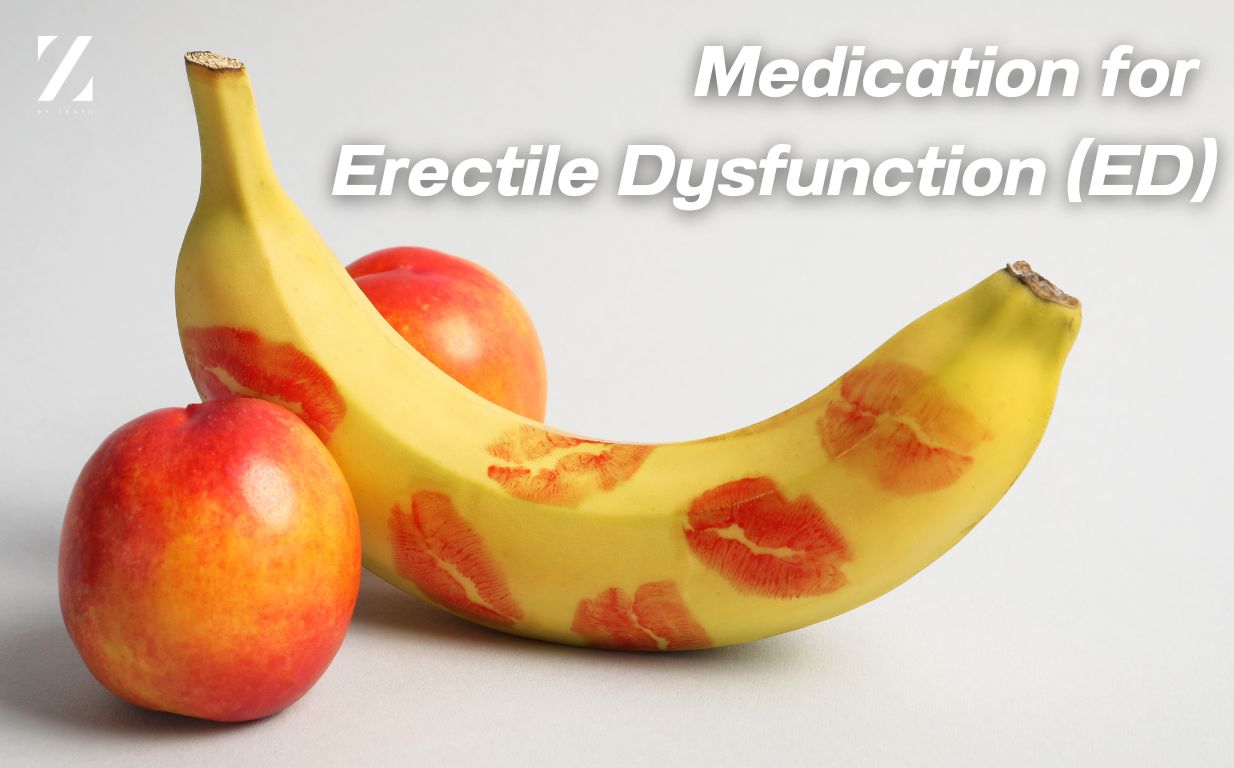The four approved oral medications for ED; sildenafil, tadalafil, vardenafil, and avanafil are effective treatments for a variety of causes, including psychological issues, diabetes, vascular problems, nerve damage from prostate surgery, and spinal cord injuries. These drugs belong to a class called PDE-5 inhibitors, which block an enzyme (PDE-5) in the penis, enhancing erections after sexual stimulation.
Key Features:
- Action Time: These medications take effect in 30–120 minutes, depending on the drug and factors like food intake.
- Dosage Adjustments: Lower starting doses are recommended for elderly patients, those on alpha blockers or certain liver-metabolizing drugs (e.g., erythromycin, ketoconazole), or those with kidney issues to avoid side effects like low blood pressure. It is very important to consult with your doctor about the appropriate dosage of the medication.
Common Side Effects:
- Headaches, flushing, indigestion, and nasal congestion are common.
- Vision changes (blue tint) may occur with sildenafil but are short-lived.
- Lower back or loin pain in some cases.
Contraindications:
These drugs are unsafe for men taking nitrates (e.g., for heart disease) or recreational “poppers” due to the risk of severe low blood pressure.
Special Considerations:
Cardiovascular Risks: Use with caution in men with heart disease, heart failure, or complex blood pressure management regimens. Sexual activity itself increases physical exertion, so it should be approached cautiously in these patients.
Differences Among Drugs:
While all PDE-5 inhibitors share the same mechanism of action, subtle differences can make one drug more suitable for specific patients or preferences. Here’s how sildenafil compares to other drugs in this class:
| DRUG | ONSET OF ACTION | T 1/2 | DOSE | ADVERSE EFFECTS | CONTRADINDICATIONS |
|---|---|---|---|---|---|
| Sildenafil | Tmax 20-120 min Duration 4 h High-fat meal decreases absorption. Alcohol use may effect efficacy. | 2-5 h | 25-100 mg Starting dose 50 mg | Headache, flushing, dyspepsia, nasala congestion, altered vision | Nitrates Hypotension Cardiovascular risk factors Retinitis pigmentosa Change dose with some antiretrovirals Should be on stable dose of alpha blockers |
| Vardenafil | Tmax 30-120 min Duration 4-5 h High-fat meal decreases absorption. ETOH use may effect efficacy. | 4-5 h | 5-10 mg | Headache, flushing, rhinitis, dyspepsia | Same as sildenafil May have minor prolongation of QT interval Concomitant user of Class I anti arrhythmic |
| Tadalafil | Tmax 30-60 min Duration 12-36 h Plasma concentration not affected by food of ETOH | 17.5 h | 10 mg, 20 mg; 2.5 or 5 mg for daily dose | Headache,dyspepsia backpain, nasal congestion, myalgia | Same as sildenafil |
| Avanafil | Tmax 30 min Duration 2 h Plasma concentration not affected by food of ETOH | 3-5 h | 50 mg 100 mg and 200 mg dose | Headache, flushing, nasal congestion nasopharyngitis back pain | Same as sildenafil |
Combination Therapy:
For men with low testosterone who don’t respond to PDE-5 inhibitors alone, adding testosterone therapy may improve outcomes.
This class of drugs has revolutionized ED treatment and is generally safe and effective when used as directed.

